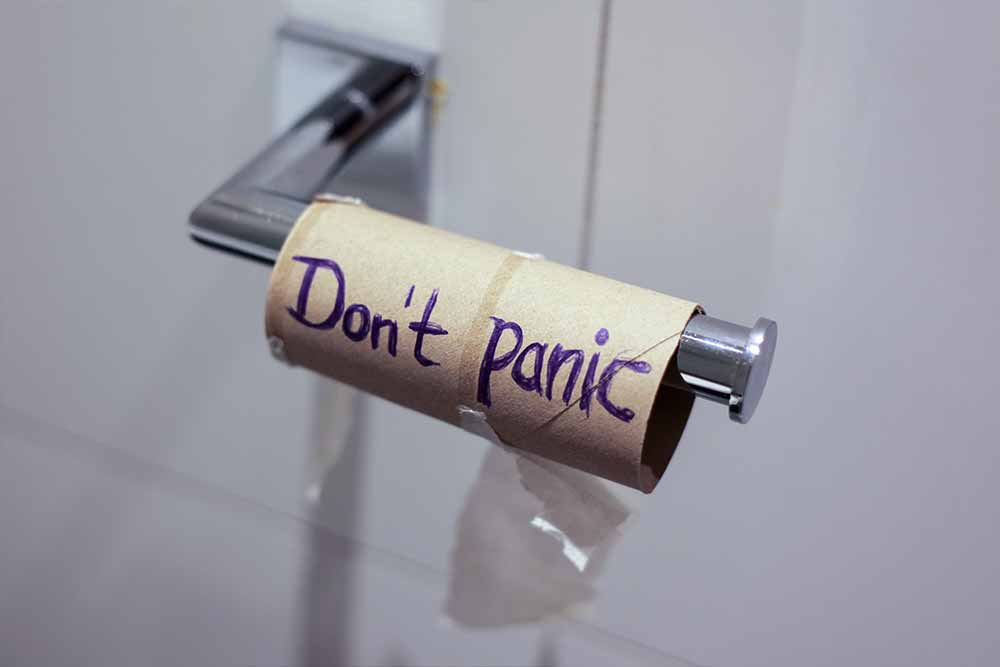Yes, STDs can go undetected if you are checking for symptoms as the basis of your investigation. STDs can go undetected for a couple of reasons:
- You're asymptomatic, which means you have contracted the disease but there are no signs or symptoms alerting you to an infection or illness. These are often called silent STDs, Chlamydia, for example, can infect 50% of men and 70% of women without symptoms. If you're concerned for your general sexual health, the only sure way to illuminate an infection as the cause of ill health is to take a medically approved STD test.
- The incubation period of the infection is longer than expected. This means you could be infected, but the timeframe in which symptoms and signs normally occur has not yet passed. If you believe you have been in a situation where you could have contracted an infection, it is worth remembering that different diseases have different incubation periods, but they can still be detected by taking a test. The incubation period is different from the “Window Period” – which is the timeframe in which a test can detect the STD
- The symptoms are ignored or missed because they feel like they're part of your body's common functionality like occasional cloudy urination (discharge), slight discomfort when peeing, or unusual odors. These things can happen regularly as part of our body's response to all different health concerns and complaints. Sometimes these symptoms are a response to a lesser infection or illness (not sexually contracted), but they can also be linked to more serious health complications resulting from a sexually transmitted infection.

LetsGetChecked
Standard 5 STD test
Chlamydia & Gonorrhea
HIV, Syphilis and Trichomoniasis
Free Shipping, Discreet packaging
Finger prick & Urine sample
$149.00
Test for 5 of the most common STDs with the popular Standard 5 LetsGetChacked at-home STD test. Using the same labs as physicians & hospitals, LetsGetChecked brings sexual health testing to your door at an affordable price, with treatment available for positive cases of Chlamydia and Trichomoniasis
Read our LetsGetChecked for information and opinions on tests and services.
Addtional information
STDs can go undetected during medical testing, but this can be caused by testing too soon, a mistake or an anomaly; like a false positive. In very unusual circumstances, the labs can have equipment malfunctions with the sampling kit or the analysis machinery.
If you're testing too soon after the moment you presumably caught the STD, it may not have had time to “infect” and could be missed by a test.
It is suggested that you test after 5 days of potential exposure. If that test is negative and you are still unsure, then retest after 2 weeks of the apparent point of exposure.
Asymptomatic STDs

Asymptomatic sexual infections are very common and many of the typically prevalent STDs. They can quite often fall into the silent STD category of infecting without signs or symptoms. In some cases, if they continue to go undetected they can cause adverse health and eventually make you quite ill.
A virus actually needs its host to survive, so believing the sole purpose of infection is to make you seriously ill is a slight misconception. Viruses are adapting and evolving to go undetected in what is believed to be a survival strategy. This means an asymptomatic infection is more common nowadays.

myLAB Box
Total Box
14 Infections Tested
Extra Genital Skin Swabs
The Most Thorough Test
Finger Prick, Urine & Saliva Sample
$369.00
A 14 panel STD test that covers everything you'd want to test if you're concerned for your general sexual health. The most comprehensive at-home STD testing kit that we've seen so far and definitely recommended as the ultimate peace of mind STD test.
Read our myLAB Box review for information and opinions on tests and services.
Undetected Chlamydia
Chlamydia is one of the most common STIs and is most prevalent in young adults in their teens and 20s. It's known as one of the silent STDs as it regularly infects without symptoms.
Whilst it has a high rate of infection in both men and women, it carries a higher risk of causing harm to the female reproductive system. If untreated the infection can result in scarring of the fallopian tubes, ovaries and endometrial lining.
You can treat chlamydia with a short round of antibiotics and typically clear with 1-2 weeks' worth of treatment.
Undetected Gonorrhea
Gonorrhea is the second most common sexually transmitted disease notably infecting millions of people per year. It is recognized as another silent infection and can go undetected without signs or symptoms.
Like Chlamydia, gonorrhea carries a greater risk of ill-health for women. It causes pelvic inflammatory disease, scar tissue on the fallopian tubes, chronic abdominal pain and can make it difficult to get pregnant. A pregnant female can pass Gonorrhea to the child if it's left untreated.
Undetected Trichomoniasis
Trichomoniasis is a parasitic infection and in most cases, it has little to no symptoms. Or the symptoms are mistaken for common complaints like discomfort during urination, discharge or unpleasant odor. Men are more likely to experience no symptoms, whereas a female may experience vaginal discharge, unpleasant smells and discomfort.
Undetected Mycoplasma Genitalium
Mycoplasma Genitalium is a type of bacteria that can be contracted during sexual activity that infects the urogenital tract, which means all the major reproductive organs within that region (male and female). It's a common form of STD, but is considered silent because in most cases there are little to no symptoms and it has been named “The New STD” have been recently discovered in the '80s. The bacteria has the ability to cause infection and harmful symptoms if left untreated.
Undetected Genital Herpes
Genital Herpes often shows no symptoms at all, which is why it can do undetected. It is spread because it does not currently have a cure and with little to no symptoms, it can live silently in our systems allowing for easier contraction. However the risk of transmission is actually considered to be quite low, but that doesn't rule out the fact that it is still an active STD that can be caught.
Undetected HIV
HIV can be ignored because of mistaken identity, it can manifest with flu-like symptoms which we commonly battle on a regular basis. It can also go undetected for months even years before it shows any clear signs or symptoms. There's no cure for HIV, but there are very effective antiretroviral medications that stop the transmission of the illness once its been diagnosed and treated. If left untreated it can result in AIDS and in some cases it can lead to various cancers.
Incubation & Window Period
There are two periods that any who is sexually active needs to worry about, the Window Period and the Incubation Period
- The window period is the timeframe between which a sexually active person is exposed to an STD and when a test can accurately detect it. It is suggested that many STDs can take up to 2 days from exposure to manifest and infect to the point at which it can be detected by a lab test. So testing within 24hrs for example might be too soon to tell if you have contracted the STI
- The incubation period is the timeframe between when a person is exposed to an STD and when symptoms and signs are then visible or noticeable within your body's functions. Unfortunately, many of us wait around for symptoms before we decide to take a test. And for many STDs the incubation period can be longer than the window period, meaning you have the STD long before the symptoms appear.
It's difficult and for many impossible to test every time you have sex, but if the sexual activity you are participating in is irregular, outside of a long-term relationship or perhaps you feel comes with the risk of exposure, then getting a test is an act of responsibility for you and any future sexual partners, waiting for symptoms in this situation is not recommended.

Incubation Period Table
| Infection | Incubation Period |
| Chlamydia | 7 days, or up to 3 weeks |
| Gonorrhea | 1 day, or up to 2 weeks |
| Trichomoniasis | 5 Days, or up to 1 month |
| Mycoplasma Genitalium | 1 week, or up to 1 month |
| Genital Herpes | 2 days, or up to 2 weeks |
| HIV | 2 – 4 weeks |
| Hepatitis A | 2 weeks, or up to 2 months |
| Hepatitis B | 8 – 22 weeks |
| Hepatitis C | 2 – 26 weeks |
| Syphilis | 3 weeks, but up to 20 years in some cases |
| HPV | 1 month, but up to 10 years in some cases |
| Oral Herpes | 2 days, or up to 2 weeks |
STD tests are mostly bundled panels, so you test for more than 1 infection. In most cases, you're testing for at least Chlamydia and Gonorrhea which has a window period of around 2-5 days. But if you're bundle includes infections like HIV, Syphilis or Hepatitis, then the window period could run into weeks before a test detects the illness.
If you're planning your test around a supposed point of exposure, then be careful that you're not testing too soon. If you have serious concerns about an infection that carries a greater risk to your health, consult a medical professional for testing rather than self-testing with an at-home STD test or shop-bought kit.
Recommended Tests
The following however are credible medically approved at-home STD tests in a range of kits and bundled test panels, whether your needs are for common or serious infections.
At Home STD Tests From LetsGetChecked

LetsGetChecked – Simple 2
This home testing kit is a simple urine sample test checking for Chlamydia and Gonorrhea. These are the most commonly contracted diseases, making this panel a great follow-up test for a previous diagnosis or general peace of mind.
$99.00

LetsGetChecked – Standard 5
This home testing kit is a combined blood and urine sample test checking for 5 of the most common STDs. Follow consultations are available with treatment plans available on some of the tested infections if found to be positive in your test results.
$149.00

LetsGetChecked – Complete 8
Testing for 8 common and less common sexually transmitted infections with a blood and urine collection kit. This is LetsGetChecked's most complete STD test which includes treatment options a follow-up consultation for positive test results.
$249.00
At Home STD Tests From Nurx

Nurx – Full Control Kit
Nurx’s most thorough STD test, screening for 5 common infections HIV, Chlamydia, Gonorrhea, Syphilis, Hepatitis C. Requires urine collection, a throat swab, rectal swab and a blood sample.
$95.00

Nurx – Healthy V
A vagina specific STD screening kit for people with concerns about their vaginal health. Testing for HIV, Chlamydia, Gonorrhea, Syphilis and Trichomoniasis. Requires a throat swab, vaginal swab and a blood sample.
$95.00
Some At Home STD Tests From MyLab Box

myLAB Box – Chlamydia & Gonorrhea
A simple urine collection kit that tests for 2 of the 4 most commonly transmitted infections Chlamydia & Gonorrhea.
$79.00

myLAB Box – Safe Box 5 Panel
5 Panel STD kit, screens for 5 high-risk STDs chlamydia, gonorrhea, HIV I & II and trichomoniasis. This test is screened from a genital swab, a urine sample and a blood sample.
$169.00

myLAB Box – Uber Box 8 Panel
8 Panel STD kit, screens for 8 high-risk STDs chlamydia, gonorrhea, hepatitis C, HIV I & II, herpes simplex 2, syphilis and trichomoniasis. This test is screened from a genital swab, a urine sample and a blood sample.
$199.00
Read our myLAB Box review for information and opinions on tests and services.
Risk of Undetected STDs
Whilst some undetected STDs are silent because they have no symptoms and are potentially permanently asymptomatic, others cases could be delayed and therefore cause serious illness as they develop over time.
If left untested and untreated these silent infections can cause serious harm if they eventually progress into a detectable infection with symptoms.
Chlamydia – Aside from the more common health risks associated with Chlamydia, if left untreated, it can also cause PID (Pelvic Inflammatory Disorder) and in more serious circumstances infertility.
Gonorrhea – Similarly there are more serious conditions that develop if Gonorrhea is left undetected and untreated, resulting in a range of bladder related issues and even meningitis.
Trichomoniasis -Untreated trichomoniasis increases the risk of the person becoming infected with HIV (human immunodeficiency virus).
Mycoplasma Genitalium – Mycoplasma commonly has no symptoms and can be undetectable unless tested. In more serious circumstances it can lead to increased health risks like a weakened immune system allowing other infections to take hold, along with a risk of infertility.
Genital Herpes – Complications can arise in the form of other infections like Vaginal Yeast (Thrush) or rare but valid cases of Meningitis, it can also cause serious bladder problems if left untreated.
HIV – Untreated HIV probably carries a far greater risk to health than most of the more common STIs in that it leads to AIDs. An untreated HIV infection has an overall mortality rate of around 90%. Untreated HIV can also lead to opportunist cancers developing and causing more serious health harm.
Can an STD go undetected for years?
Yes, STDs can be undetected for long periods and in some cases like HIV or Syphilis the incubation period can be 10, even 20 years long. Despite being undetected for that amount of time, they are still active and can be transmitted to other people.
How long can STD's go undetected?
There are 10 commonly transmitted STDs that all have different incubation periods. Some vary from 1-2 weeks until they are normally detectable through symptoms, others have incubation periods of over 10 years. If you are concerned about a specific infection, check that individual STI's incubation period.
The time in which they are detectable by a test (window period) is different from noticing signs or symptoms (the incubation period). Tests usually detect infections quicker than if you are waiting for symptoms, which may not show up for some time.
Sources
North Dakota Department of Health – STD Time Periods
NHS UK – How so do STIs appear
Image Credits
Featured Image – Photo by Kelly Sikkema
Kissing Couple – Photo by Thought Catalog
Unhappy Man – Photo by Nik Shuliahin








